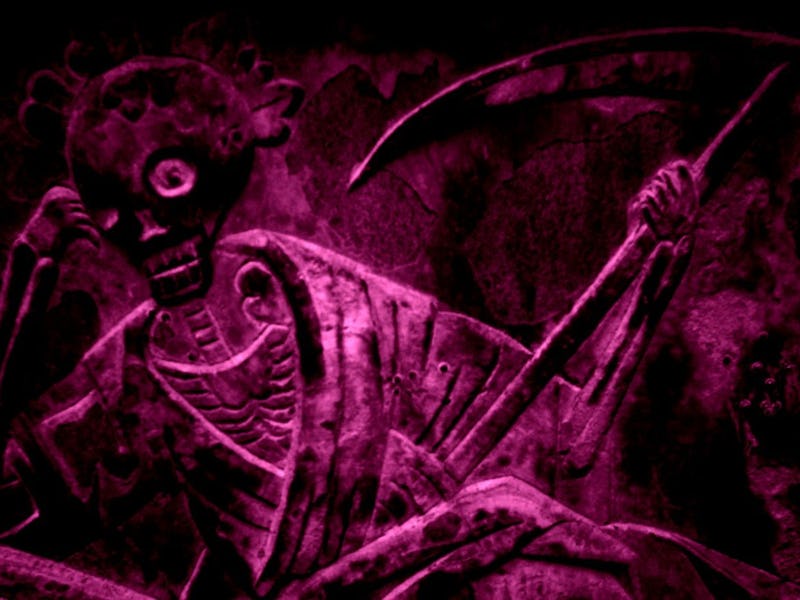Can We Cure Sudden Death? Scientists in San Diego Plan to Vanquish a Monster
From talismans to clinical trials, humans have been trying to figure out sudden death for a millennia.

Sudden death is exactly what it sounds like. It’s a swift, inexplicable end fundamentally at odds with society’s usual, lingering mortality tales. It often comes in the form of a heart attack and it is the form of coil shuffling that your doctor and your parents never talked to you about, the form that cannot be predicted. That may be about to change.
“There must be something else that is underpinning what happens,” says Scripps Translational Institute Clinical Trials Coordinator Sarah Topol. “We’re looking for genetic clues so that, in the future, sudden death can be prevented.”
Through DNA sequencing and powerful analytics tools, Topol and her “Molecular Autopsy Study” team hope to finally determine the root cause of sudden unexpected death. The researchers study the genetic samples of people who have passed away from sudden death — specifically blood or tissue that might contain clues about previously unrecognized kill switches. Topol says that the work will continue for another ten years with the help of medical examiners around the country.
Right now the team is primarily working with the San Diego Medical Examiner’s Office, which alerts the Scripps teams when a sudden death case comes in. They also screen a list provided by Life Sharing, an organ and tissue donation nonprofit, twice a day for potential candidates.
The American Heart Association reports that nearly 400,000 cardiac arrests occur out of hospitals every year — the number of “youthful sudden deaths” caused by cardiac arrest is believed to be between 1,000 to 5,000 people who haven’t yet hit middle age. As of 2010, the incidence of sudden death in the general population ages 20 to 75, was 1 in 1,000 individuals — 18.5 percent of all deaths.
“Maybe there is something that occurred in the heart — a sudden heart attack that damaged the heart muscle and caused it to stop — but we’re still trying to find exactly what causes that to happen,” says Topol. “The death may not even involve a heart attack necessarily. The heart may stop, but it could have been something neurological that caused the sudden death, by form of a seizure or stroke.”
But sudden death isn’t just an event. It’s a monster.
People of the late Medieval period attempted to bribe the beast. Fourteenth and fifteenth century Europeans would carry talismans and charms, in the hopes of warding off sudden death. Some would even carry an indulgence in the form of a “letter to Charlemagne,” a recreation of an alleged letter sent from Pope Leo III to Western European king, a “virtual blanket protection against evil, disease, and sudden death.” Besides the obvious fear of death, people in this time were particularly concerned about dying unprepared.
Dying suddenly meant no time for death rites and no confessing of sins, meaning that, without one last religious meeting, one could get trapped in Purgatory or sent to Hell. Images of St. Christopher were increasingly enshrined on the walls of English churches — the hope that the presence of the guardian against sudden death would be enough to stop the specter.
It wasn’t just the sick and elderly craving these protections. Young people worried too. Death was all but a physical presence.
Topol only studies people — bodies now — younger than 45 without any history of excessive drug or alcohol abuse, morbid obesity, or any other serious medical conditions. These are individuals that seem to have been at peak health up until the moment they weren’t. “There was a young man in our molecular autopsy study who was just shooting hoops by himself and just dropped — no one there to witness it and give him the attention when he needed it,” says Topol. “We’ve seen it happen to very young people, infants, children, athletic teenagers — there’s no warning sign, there is really is no reason that they should think that they’re at risk.”
Heart attack death rates, 2011 to 2013.
While incidences of sudden death of children and adults ages one to 40 has received increasing attention over the past few decades, the majority of studies on the subject have been reviews of incidents, instead of studies on the cause. Since 1937 (at least) medical researchers have detailed cases of sudden death — wondering how highly conditioned athletes could fall prey; considering the relationship between emotional stress and sudden cardiac arrest. A 1973 review at the sudden death of infants describes the situation as a “factual void” without any specific clues to a cause.
A rendering of St. Christopher.
The Scripps team also studies the families of its dead subjects, taking saliva samples and performing genetic analysis. And sometimes it goes beyond that. The mother of one young man who passed from sudden death has since then been fitted with an internal defibrillator. She is the carrier of the same mutated gene as her son. The hope is that, if she ever does have a similar rhythm disruption in her heart, the defibrillator will be able to save her. The study might save her life before it starts to save the lives of others.